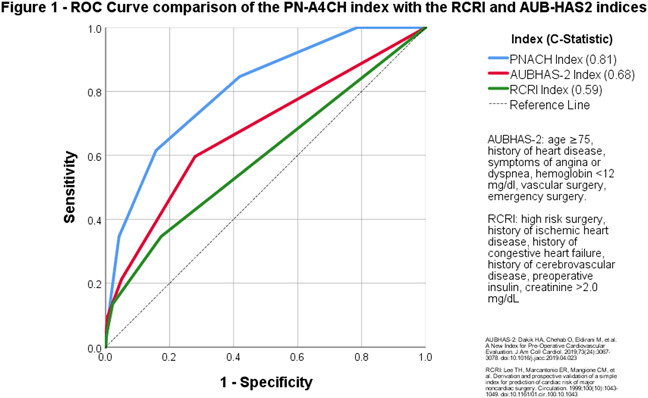Introduction and objective
Partial Nephrectomy (PN) is a procedure which aims to preserve renal functionality and minimize morbidity in patients with localized kidney tumors. However, it is associated with a non-negligible risk of cardiovascular morbidity and mortality in a subgroup of high-risk patients. We aim to develop a procedure-specific risk-index, assess its performance, and compare it to widely-used universal risk indices.
Methods
Using the American College of Surgeons – National Surgical Quality Improvement Program (ACS-NSQIP) database. The primary outcome MACE was defined as incidence of myocardial infarction, stroke, or any 30-day mortality. A multivariable logistic regression model was constructed, and model performance and calibration were evaluated using a ROC analysis and the Hosmer-Lemeshow test respectively. The performance of the Revised Cardiac Risk Index (RCRI) and the AUB-HAS2 Cardiovascular Risk Index in the PN cohort was compared to the novel index.
Results
A total of 4,795 patients were included in the study. In total, 52 (1.1%) patients had incidence of MACE. A univariate analysis yielded thirteen eligible variables for entry into the multivariate analysis. The final PN-A4CH model (Table 1) comprised six variables: Age ≥75 years, ASA Class >2, Anemia, surgical Approach, Creatinine >1.5 mg/dL, and history of Heart disease. Index performance was assessed, and ROC analysis provided a C-statistic of 0.81, calibration R2 was 0.99, and sensitivity was 85%. The index was compared to the RCRI and AUB-HAS2 indices, which attained ROC C-Statistics of 0.59 and 0.68 respectively (Figure 1).
Conclusions
The authors propose a novel procedure-specific cardiovascular risk-prediction index for partial nephrectomy. The PN-A4CH index displayed sufficient predictive ability, excellent calibration, and outperformed universal risk indices. The index may aid in better patient selection and optimization of management in high-risk individuals.

